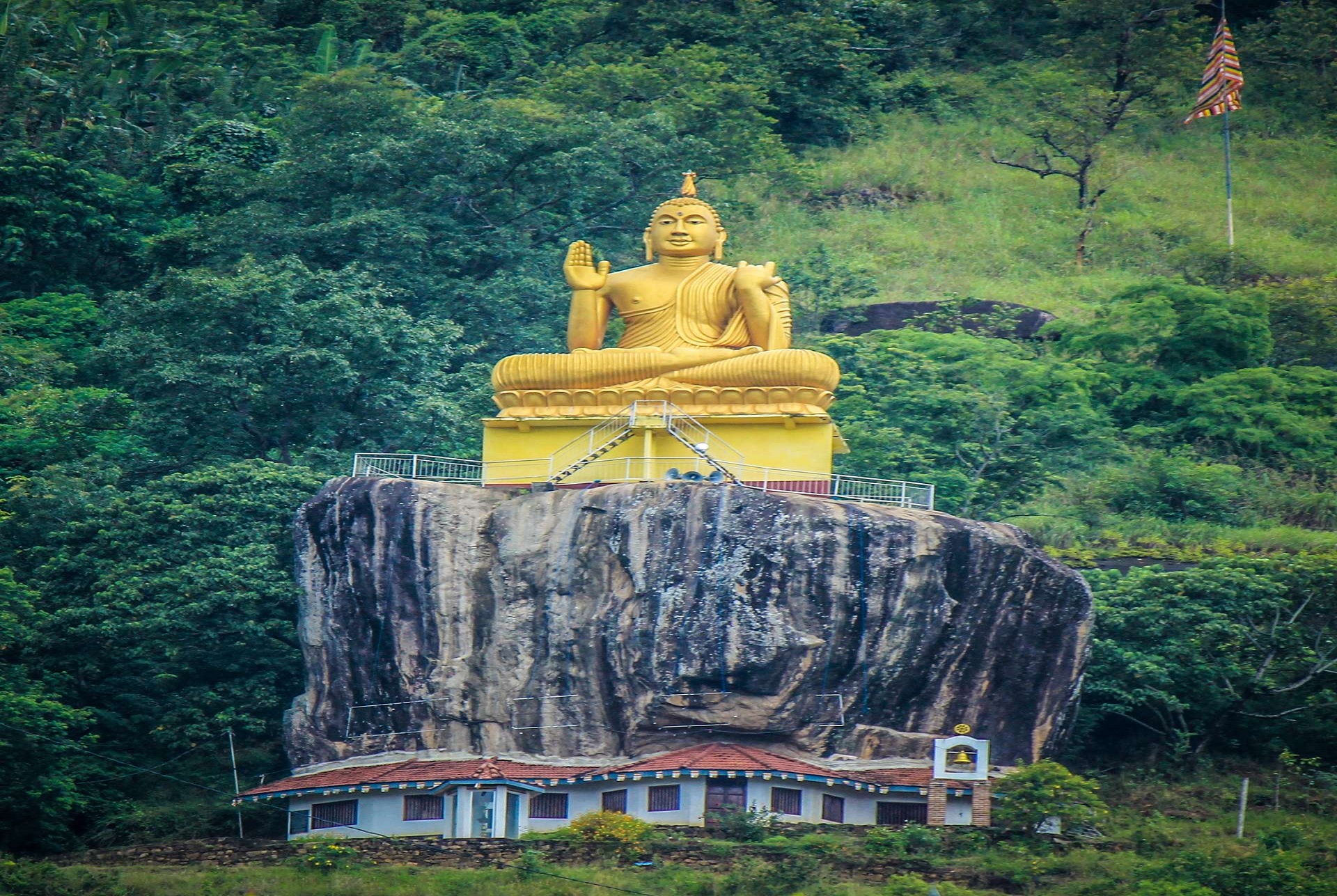It is believed that Buddha was born in Nepal and lived in India. But it was in Sri Lanka that Buddhism flourished incredibly in its purest form.
According to the historical chronicles of Sri Lanka, Buddha visited the country 3 times.
During the 3rd century BC, the Indian Emperor Asoka sent his own son to Sri Lanka with the sole purpose of introducing Budhhism while King Devanampiyatissa was reigning the country. Mihintale in the Central Province is where the two met. This area was then declared as a wildlife sanctuary and was the first of its kind in the world. Son of Emperor Asoka also planted the Sacred Bo tree that was brought in by his sister from India. The original Bo Tree disappeared in India but the one that is in Anuradhapura – Sri Maha Bodhi, continues to grow and is recorded as the world’s oldest tree.
In 84BC, the Matale Aluvihara Temple recorded the first teachings of Buddha.
During the 4th century, Sri Lanka obtained possession of the Tooth Relic, which is a symbol of kingship for the nation. Today the Sacred Tooth Relic is enshrined at Sri Dalada Maligawa – a Temple dedicated to protect this Tooth Relic in Kandy, Sri Lanka.
From the 4th to 11th century BC, the city of Anuradhapura ruled the country and Buddhism flourished with royal patronage. Within this period, many large Buddhist statues, pagodas, and monasteries were built. After almost 2000 years, most of these Buddhist ruins still remain intact in Anuradhapura.
The 11th to 13th century BC is when the city of Polonnaruwa ruled Sri Lanka. During this period, some significant Buddhist heritage sites are:
- Jetavanaramaya Stupa in Anuradhapura – 2nd tallest non-pyramidal building. The structure is 122m in height and has a base of 233,000 square meters. For the construction of this Pagoda, about 93.3 million baked bricks were used.
- Aukana Buddha Statue – tallest Buddha statue in existence today. This stunning structure is 11.84 meters in height (without pedestal) and was carved from one single rock.
- Alahena Parivena in Polonnaruwa – a monastic hospital. This is the only hospital in the world that uses a range of precision surgical instruments and medical equipment. For example, to apply medicine to sensitive points such as nostrils and eyelids, they use different sizes of bronze probes.
Today, these ancient cities of Anuradhapura, Kandy and Polonnarywa are UNESCO World Heritage sites along with the Dambulla Cave Temple that was built in the 1st century BC.
The southern coast of Sri Lanka also has traces of Buddhist temples that are 200 years old. When you visit these temples during your Sri Lanka tailor made tour, you will be amazed at the southern traditional Buddhist art which also has a touch of European contemporary architecture.
Buddhist Festivals of Sri Lanka
- Vesak – full moon day in the month of May. This is the most important Buddhist festival where devotees at temples make offerings and meditate. Public places and homes are decorated with brightly colored lanterns and pandals. Free food and non-alcoholic beverages are offered to public who are strolling on the streets to see Vesak decorations.
- Esala Perahera in Kandy – held in July/August every year. This is a grand procession also known as the Festival of the Tooth and pays homage to the Sacred Tooth Relic enshrined at the Temple of the Sacred Tooth Relic (Sri Dalada Maligawa). This two week long procession includes hundreds of costumed elephants, traditional dancers, drummers, stilt walkers and more.
With over 12,000 Buddhist heritage sites spread across the island nation and several Buddhist festivals throughout the year, there is certainly no doubt that in terms of Buddhist heritage, Sri Lanka is second to none.

